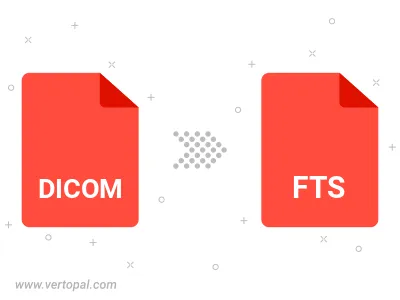Convert DICOM to FTS
Convert DICOM images to FTS format, edit and optimize images online and free.

DICOM, or Digital Imaging and Communications in Medicine, is a standardized file format used in the field of medical imaging. It facilitates the storage, exchange, and transmission of medical images and related information between devices from different manufacturers, ensuring interoperability in healthcare environments. Originating from efforts by the National Electrical Manufacturers Association (NEMA) and the American College of Radiology (ACR) in the 1980s, DICOM's evolution has played a crucial role in the development of advanced medical imaging technologies and systems.
The Flexible Image Transport System (FTS) file extension, is predominantly utilized for the storage, transmission, and manipulation of scientific and astronomical data. Developed by NASA in the late 1970s, this standardized format facilitates data interchange among the astronomical community. FTS is highly extensible, supporting various data types such as images, tables, and multidimensional arrays. Its widespread adoption stems from its capability to encapsulate metadata efficiently, enabling accurate and effective exchange of complex datasets among researchers and institutions.
Choose the DICOM image you wish to convert.
Use any available convert tools on the preview page, and click Convert.
Wait for the converter to finish and download your FTS image.

To change DICOM format to FTS, upload your DICOM file to proceed to the preview page. Use any available tools if you want to edit and manipulate your DICOM file. Click on the convert button and wait for the convert to complete. Download the converted FTS file afterward.
Follow steps below if you have installed Vertopal CLI on your macOS system.
cd to DICOM file location or include path to your input file.Follow steps below if you have installed Vertopal CLI on your Windows system.
cd to DICOM file location or include path to your input file.Follow steps below if you have installed Vertopal CLI on your Linux system.
cd to DICOM file location or include path to your input file.